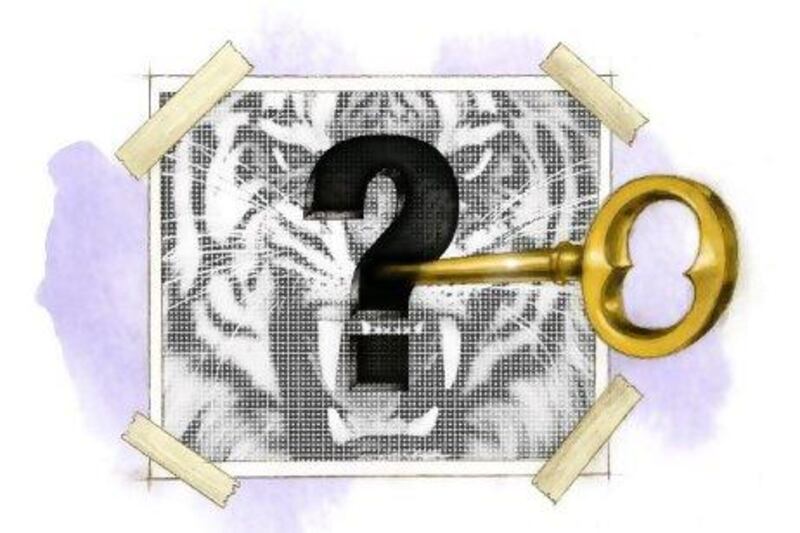DUBAI // The image is simple: a photograph of a fierce tiger leaping across a field of clean snow.
But there is more. What you don't see is the two embedded images - a wide-eyed kitten and a handwritten message.
They are deeply embedded in the digital information of the photograph, hidden in such a way that they only slightly, almost imperceptibly alter the photo's appearance. But to a viewer armed with the message's unique algorithm decoder, they are simple to unpick.
Using a new technique developed by a Dubai researcher, hiding those images may have just become easier to do, and more difficult to detect if intercepted. Steganography, a data-hiding method that aims to ensure that only the message's sender and receiver know there is secret content, has typically used an approach that manipulates the image's pixels or data.
Chief among the field's uses is the desire of those involved in covert intelligence work to transmit messages without being snooped upon by others. Beyond that, it has potential for use in digital "watermarking" - embedding copyright information in an image in a way that's hard to spot, and therefore hard for a potential plagiariser to remove, but that the original owner can hold up as evidence that the image is theirs.
Now a pioneering new method by Dr Tamer Rabie, a computer science professor at the Canadian University of Dubai, claims to embed more information that is harder to spot and is less susceptible to tampering.
"The idea is, if the tiger image is intercepted, they shouldn't notice a change or notice anything odd about this ordinary-looking photograph," Dr Rabie said.
"Then the hidden messages need to be recovered without too much degradation."
Dr Rabie revealed his algorithm, which effectively scatters the hidden image three times across all the pixels of the "host" image, at a conference in Dubai in April.
This threefold scattering, he says, makes the hidden image secure enough that it can be sent with confidence across an insecure network.
Starting with a standard JPEG - the most common type of image on the internet - the method first identifies the part of the image that will be least affected visually by the addition of the secret data.
"You hide information in the insignificant parts of the image," said Dr Rabie. "It could be anything - another image, sound. You could do it on a small laptop. Anybody could do it."
The method uses fast fourier transform (FFT) to break pictures down into their constituent elements of frequency, magnitude and phase. The phase part describes how the objects in the picture are positioned in relation to each other, a valuable component of the way eyes perceive images.
Tampering with that would be easily seen in the picture. So in inserting the secret image, it is left unaltered. But the magnitude can be modified with barely any effect on the overall appearance of a picture. And the magnitude element can be further broken down into two parts - colour and brightness - allowing two images to be hidden within a single picture.
Of those, we are more sensitive to changes in brightness than colour, making messages hidden in the colour channel much harder to spot.
In his paper, Dr Rabie notes that FFT "promises high fidelity, double the capacity of previous methods, higher security and robustness to tampering".
Older "stego" techniques allowed images to be hidden within only about 12 per cent of the area of the "host" image. The FFT method increases that to as much as half the area. And it is more robust, with images retaining their secrets under heavier manipulation than previous methods. With the new method, up to 60 per cent of the information in the "host" image can be destroyed before the hidden message becomes unreadable.
Even with extreme tampering on the image, including repainting and rotating the image 90 degrees, the hidden message remains intact.
This is because the secret information is embedded - not in individual pixels - but spread across all of them. And the algorithm makes hiding a picture easy.
Dr Rabie says he has taught students how to unlock a hidden messages in just one lecture There are, however, concerns about the technique's practical use.
"The paper does not study what is called 'steganographic security', which is a serious drawback," said Jessica Fridrich, a professor at the State University of New York at Binghamton and author of Steganography in Digital Media.
"It belongs to a category that I call 'data stuffing' - hide as much as you can so that the visual quality does not degrade ... I can apply computer algorithms and prove beyond doubt that there is a hidden message in the image."
If that is the case, she says, anyone looking for a hidden message within a picture could do the same. And knowing a hidden image is there is a good step towards working out what it is. Dr Rabie admits his work does not address the additional security needed to ensure a computer algorithm could not pick up on hidden messages.
"Full steganography means the information also has to be very secure, but my research is a new idea for information hiding," he said.
"If someone wanted to use it, they would have to add an extra layer of security to make it more secure, but that's not part of my research."
But he says the possibilities for further steganography research using the FFT approach are far from exhausted. It could be applied to other types of media - audio and video, for example.






